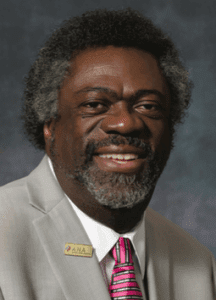ANA offers guidance to help address a national and global epidemic.
ON MY WAY INTO WORK at the burn center early in my career, I’d often worry about the pain my patients were going to experience while I performed their wound care. I knew those interventions were necessary to help them get better, but pain management was far from what it is today. On my way back home, I’d think about whether I did enough to ease my patients’ pain, given their injuries were some of the worst you could imagine.
Although progress has been made in burn care and other practice areas, pain is a global problem. In the United States alone, 50 

As nurses, we can’t let this epidemic go on. Like many of you, I was taught that pain is whatever the person says it is. And addressing pain—whether acute or chronic—is a critical part of our role as nurses and an ethical responsibility. We also know that substance use disorder is a real issue, and that healthcare has relied too much on medications, such as opioids, to address pain over other modalities. That said, patients who have substance use disorders also can be in pain, so our obligation to find that balance and address their specific needs is just as critical.
To help guide you in your advocacy and practice, the American Nurses Association (ANA) recently released two resources: The Ethical Responsibility to Manage Pain and the Suffering It Causes position statement (tinyurl.com/y2w42ens) and a short YouTube video highlighting statement recommendations (youtube.com/watch?v=W6vYfkjMo4E). One recommendation focuses on the importance of individualizing pain management plans. In some cases, an end-goal of being pain-free may not be possible. So, as nurses often do, we need to engage in frank discussions with our patients to help them get to a manageable pain level. The ANA statement also suggests using a combination of approaches, such as meditation, exercise, and medications, again based on individual needs. And it calls on nurses to examine their own biases when it comes to identifying and managing patient pain.
Another resource is the Pain Management Best Practices Inter-Agency Task Force Report, which the U.S. Department of Health and Human Services (HHS) released in May (tinyurl.com/y4m9uh34). Many of its recommendations align with the ANA position statement. The HHS report specifically notes the critical need for more clinicians with expertise in pain management. And both documents emphasize having evidence and more research to support the use of pharmacologic and other modalities.
I encourage you to read ANA’s position statement, in particular, and review your organization’s pain management protocols. Do your protocols need to be updated? Are you meeting your patients’ needs? Remember to use your full range of assessment skills—watching for cues such as grimacing and guarding that signal unreported pain—and then develop a mutually acceptable plan to ensure patient comfort.
None of us want to see our patients and those in our communities suffer—whether from acute pain related to an injury or procedure, chronic pain, or other consequences of under- or overtreatment. I know from personal experience that the protocols now used at the burn center—which include strategies like conscious sedation, anti-anxiety medication, guided imagery, and virtual reality—have made a world of difference and helped countless patients. Each of you has the ability to help countless more.




















